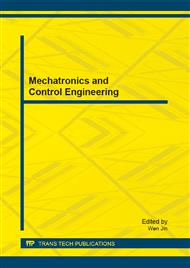p.635
p.638
p.645
p.651
p.657
p.665
p.670
p.677
p.683
Nanocrystalline Diamond Films Deposited by Two-Step Approach from CH4/H2 Microwave Plasma: The Influence of Reactor Pressure
Abstract:
The morphology, growth rate and atomic-bonding structure of nanocrystalline diamond films deposited on Si substrates were investigated under various pressures of the reactor. The films were deposited by CH4/H2 microwave plasma with two-step deposition and H2-plasma cleaning processes. The pressures of 1, 2, 5, 9, and 25 kPa were used for deposition. In situ gas-phase species, including electron density, were monitored by an optical spectrometer and impedance analyzer. The films were characterized by SEM, Raman microscope, and white light reflectrometer. When the pressure increased, the surface smoothness and diamond grain size increased, amorphous carbon content decreased, and the intensity ratio of CH/Hβ for the growth step increased. The growth rate was in proportional to the ratio of CH/Hβ for the nucleation step but in inverse proportion to the electron density. The growth rates decreased from 370 nm/h for 1 kPa to 320 nm/h for 2 kPa. After that, the growth rate rapidly increased to 460 nm/h for 9 kPa, but it gradually decreased to 450 nm/h for 25 kPa. The film refractive indices were 2.16 for 5 kPa, 2.21 for 9 kPa, and 2.38 for 25 kPa. The films grown under 1 and 2 kPa showed highly light absorption.
Info:
Periodical:
Pages:
657-664
Citation:
Online since:
July 2013
Authors:
Price:
Сopyright:
© 2013 Trans Tech Publications Ltd. All Rights Reserved
Share:
Citation:


